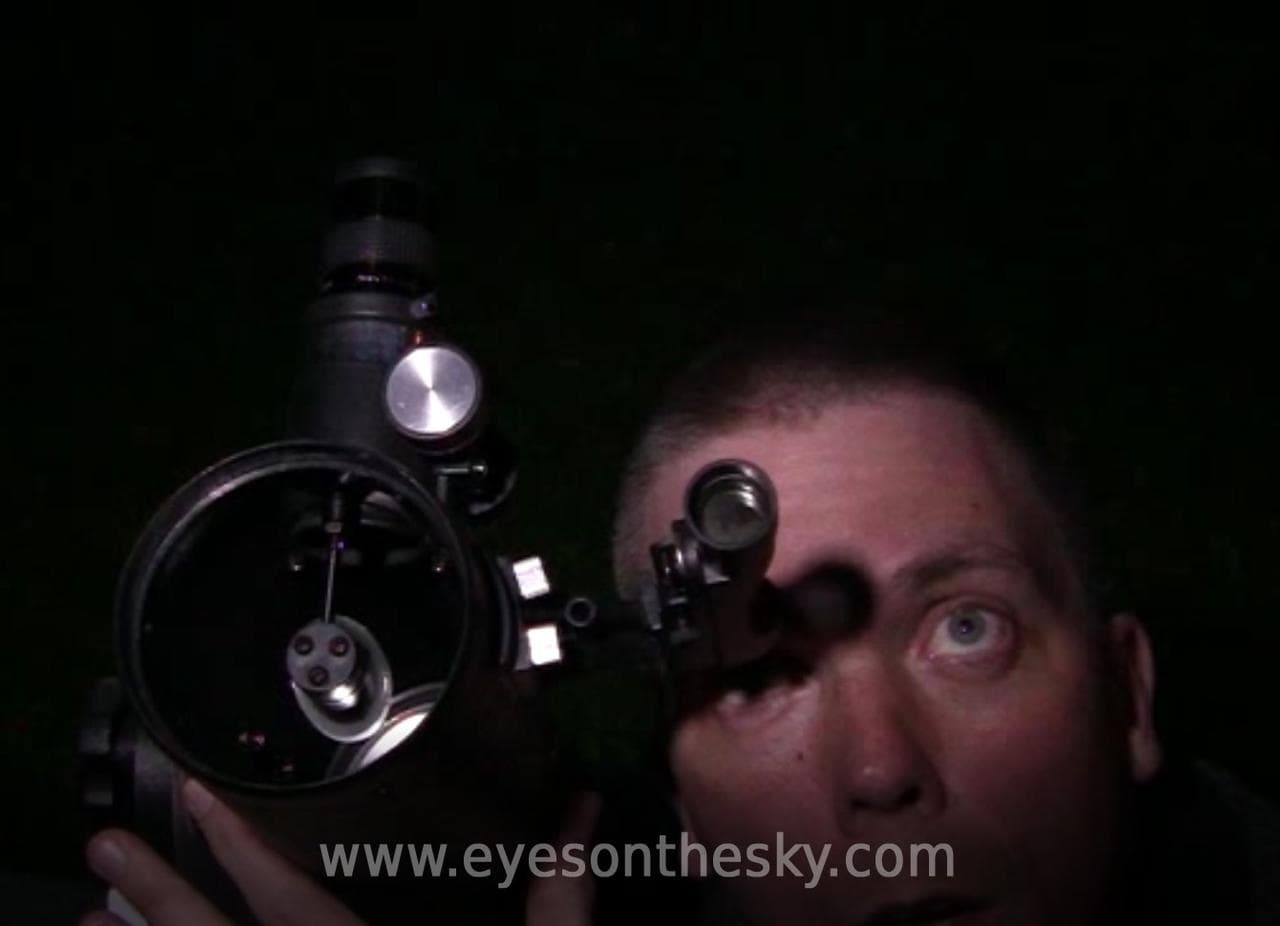
with David Fuller

Having trouble locating objects with your new telescope?
Don't give up!
Telescopes seem like they are easy to use - just point it generally where you think the object is you want to see, and it should be visible in the eyepiece, right? I mean, that's what we do with our phones and cameras - just point it, and "Boom!" - there it is!!
So why isn't a telescope so simple? What are you doing wrong?
There's a few things that beginners may not realize they're doing. Here's how to find things more easily with a telescope your first time out.
1) Make sure the mount and tripod are steady
This is easy to overlook, but it is VERY important. Your telescope only shows a very narrow slice of the sky, even at low power. Keep in mind, if you drew a line from horizon to horizon, that is 180 degrees. Your telescope only shows 1/180th of that line, at low power. So even very small movements of the tripod or mount will appear to be HUGE changes in the eyepiece! Think about zooming in a camera all the way, without using a steadying feature to smooth out your unsteady hands. The same thing happens with a telescope; a little motion one way or the other will make the image at the eyepiece appear to move a lot - very often, out of the field of view entirely! One degree across for a low power field of view really is not a lot of viewing area - but that's required, because many objects overhead really are pretty small, and need the magnification.
So tighten up the bolts and screws, make sure all the motions move smoothly, and that you don't have any binding of any parts. If you've done that and still seem to have some issues, you can find some more small telescope improvement tips here.
2) Align the finderscope to the main telescope
On most telescopes, there is either a short, small telescope, or a little 'red dot finder' that has a red light you can turn on to help aim the telescope. This is an important feature, because while your telescope may only show 1 degree of sky at low magnification, that short telescope on top will both magnify and show 5 to 7 degrees of sky. A red dot finder doesn't magnify the sky, but it does allow the user to aim the telescope using a simple "line of sight" type of set up.
Therefore it is important to make sure this finder is secured to the top of the main telescope, and then aligned to the main telescope tube. Otherwise, your finder may be aimed one direction, and your telescope the another way! That will make it hard to find things with the larger telescope - it's quite literally like being cross-eyed. Check out this video to learn how to align your finder with the main telescope - and remember, do this during the daytime for best success!
3. Use LOW power to start - EVERY time!
One of the main problems getting started with a telescope is that some of the best objects to view - the Moon, Jupiter, Saturn, Mars - are bright, and beginners are told to use high magnification on them to see them well. While this is true, finding the objects first means using LOW power initially!
This goes back to a phone or camera: The more you "zoom in" the narrower the field of view gets (the less you see overall). The same is true of a telescope. So while that low magnification view is about one degree of sky, a higher magnification view will be much, much narrower, sometimes as little as 1/4 of a degree or less! That means it is hard to line up your telescope using the high magnification first, no matter how bright or large the object.
Use LOW magnification first - that will likely be a 17mm, 20mm, 25mm or 26mm eyepiece, depending on your telescope. Do NOT use a 10mm, 6mm or 4mm eyepiece to find an object; switch to that eyepiece after you have located the object at lower power first. Then when moving to a new object, put the low power eyepiece back into the telescope, and start again. For more information on eyepieces, calculating magnification, and the field of view you can see in the eyepiece, watch these videos:
4. Start by aiming for objects that are BRIGHT!
Don't worry too much yet about what you are seeing. The important part is being able to find something in the sky initially. If the Moon is out, start with that; if not, look for a bright star, ideally partway up from the horizon, but not overhead (that's harder on your neck!). Learning to aim a telescope is a skill that takes some time.
(If your telescope mount is one that is not a simple up/down - spins-around type, you may wish to watch the videos on this page to learn how to set up the mount and use it first.)
Some people find it easier to close one eye and aim the telescope that way. I find it easier to keep both eyes open, especially using a magnified finderscope (not the red-dot kind). Then I can see when that bright star or planet is lined up more easily with my telescope's finder.
And! This is important: Many finderscopes REVERSE the field of view, both up and down and left/right. So unlike binoculars that will follow your view as if you are turning your head, the finderscope may appear to show the stars move in the opposite direction of what you expect! Take your time learning how to manage this; it takes practice, so learning to aim at bright stars - even if they are not terribly interesting to see in the main telescope - is an important skill to learn first.
5. Start by observing objects that are BIG
Many observers don't realize that objects in the sky may appear small to our naked eye, but the telescope can magnify them a lot. But even so, many of them are still VERY small, and may require a LOT of magnification (like even the 'big' planets like Jupiter and Saturn, and even then, they still appear small!). But there are even larger objects to target first, than can make your observing experience more successful the first time out.
For winter observing in the northern hemisphere, check out this video below to learn to target a few large, great-to-observe objects in the night sky.
And that should help you get started successfully viewing the night sky! If you do find success with those, do consider returning to the home page here for new astronomy videos on a regular basis so you can learn how to find more objects overhead from your backyard. There's also videos on how to learn your way around the sky thanks to some simple stargazing basics, and check out this link for the complete telescope basics series in order.
If you like, subscribe to my regular astronomy videos on YouTube so you won't miss any videos on finding and seeing more in the night sky.
